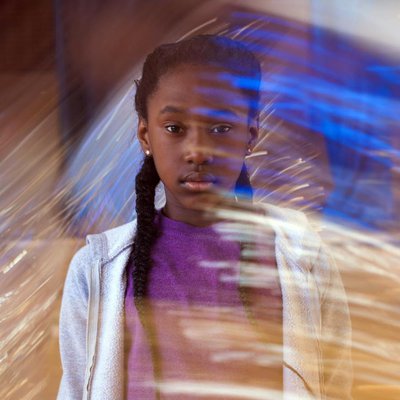
Clocking in at just 72 minutes, The Fits is less full-length feature than a new form of cinematic poetry, a visually stunning film that is at once as inscrutable and straightforward as a parable.
Co-written, co-produced and directed by Anna Rose Holmer in her filmmaking debut, the movie focuses — with physical intimacy and minimal dialogue — on Toni (Royalty Hightower), a quiet, observant 11-year-old girl who seems to spend all her waking hours in a gym, surrounded by boxers and the fierce women of a competitive dance team.
The film is rapid, almost breathless, in its storytelling, dropping the audience directly into the action with little exposition and no backstory. In the opening scene, the camera faces Toni as she does pushups, counting off slowly as she stares placidly into the screen. We quickly learn that she is something of a tomboy, a reserved girl whose closest relationship is with her brother Jermaine, one of several young black men who train and spar on the gym’s canvas.
Despite the teasing of Jermaine and his friends, Toni decides to join the dance squad, where she witnesses a surprising form of eroticized gamesmanship that rivals what goes on in the boxing ring. The older girls on the dance squad call these new recruits “crabs,” mildly mocking their awkwardness, but as the practices heat up in anticipation of a citywide competition, the group begins to gain a kind of cohesiveness.
And then, suddenly, one girl after the other succumbs to “the fits,” a form of epileptic seizure that threatens to become an epidemic. The rumors start as each “fit” is discussed and analyzed. Is it something in the water? Is it caused by the temporary tattoos the dancers wear? One young recruit, noticing a trend, suggests it might be a “boyfriend disease.”
Toni, for her part, begins to suspect that her friends are faking the fits to fit in. Is it merely peer pressure at work? In this sense, the film inverts the narrative of witchcraft, turning the idea of being possessed into an individual act that is less rebellious or demonic than a negotiation for status and identity. The sexual and social implications here are obvious, regardless of the “real” cause of the seizures.
And yet, the question of whether the fits are involuntary or chosen becomes moot: What’s important is how Toni will respond, and thus define herself amid the confusion of the world. This is where the film finds its strength, in focusing closely on the evolution of a young woman discovering where, exactly, she fits, and how she herself will fit in.
The Fits is unlike any film I’ve ever seen. As a director, Holmer shows an implicit trust in her audience, stripping the story down to its most physical reality and allowing characters to develop almost solely through action and gesture. The closest cinematic equivalent is the trio of experimental digital films by Gus Van Sant (called the “Death Trilogy,” and including Last Days and Elephant) — films that found a raw, haunting power in their patient, documentary-like attention to the movement of people through space and time.
Which is not to say that Holmer’s film lacks the finer tunings of cinematic artistry. The cinematography, with its tight, roving pans and sudden close-ups, is sophisticated and sure, and the soundtrack is simply amazing — a haunting and minimalistic thrum of ambient noises and discordant, jazzy woodwind bleats that amplify the eerie confusion of Toni’s surroundings.
This is an impressive debut for Holmer, whose direction oozes a hypnotizing confidence. In fact, the film itself is hypnotizing — an immersion into a dreamy meditation on what it means to be human, inside and out. Style and substance are inseparable in The Fits, in the same way that “the fits” themselves cannot be disentangled from their surroundings, and therefore explained away. (Broadway Metro)